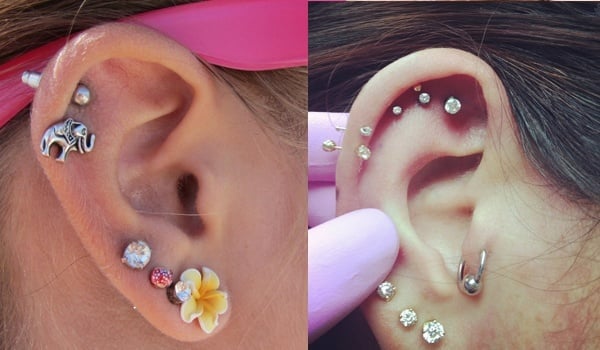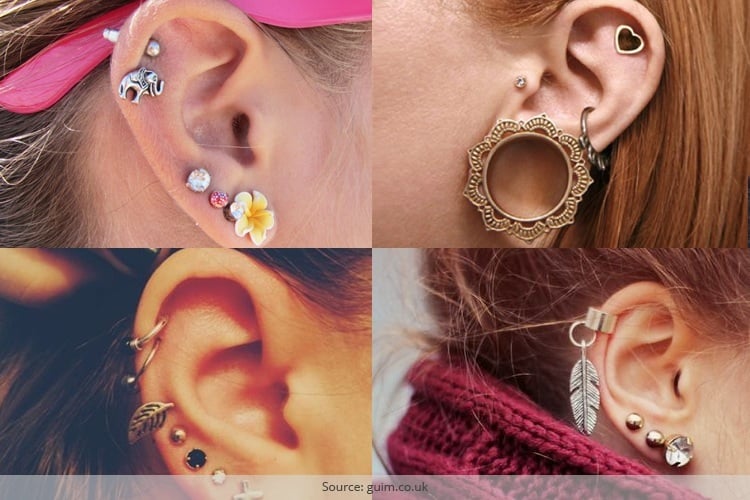
What Exactly is Cartilage Piercing?
A perforation to wear jewellery on the body is called Cartilage Piercing. The most common cartilage piercings are those done on the nose and ear.
Since it is a body art, there must be a lot of consideration before it is done. A piercing can heal if you do not wear a stud for a while. But if the piercing is very old, this might take a while, or may not heal at all.
Before getting a ear cartilage piercing or nose cartilage piercing done, you should ask yourself questions like – Will cartilage piercing suit my personality? Will it hurt? Does it incur any side effects? How long will it take to heal up? Finally, where should I get my ear/nose cartilage pierced?
And only when you are convinced with your answers, you should proceed further.
[Also Read: Different Body Piercings]
In this edition, we are going to answer some of the frequently asked questions on cartilage piercing, the pros and cons involved and also provide you with some helpful tips on taking care of your skin after piercing.
The first step to getting a cartilage piercing is knowing what it is, and where it is located and how each of the are referred.
Below is an ear piercing diagram for you, after which we will show you all the different yet individual cartilage ear piercings.
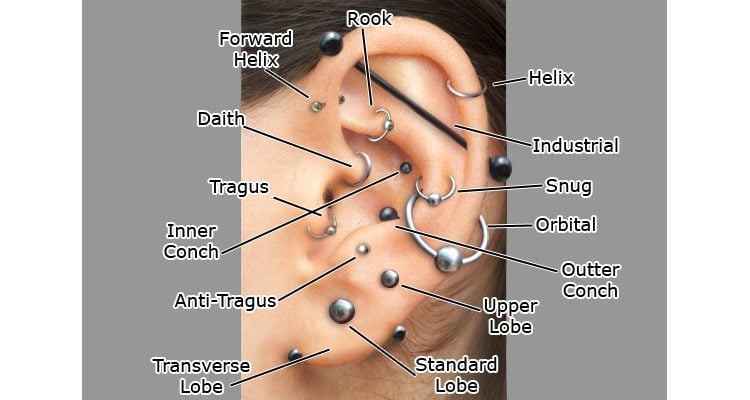
Different Types Of Ear Cartilage Piercings
Helix Piercing: This piercing is on the outer rim of cartilage on the ear, extending from just above the lobe. Again this type further divides into
- Forward Helix Piercing: The area closest to head.
- Industrial Helix Piercing: Two piercings joined by a single piece of jewelry, usually a barbell, with one piercing in the helix and the other in the forward helix.
[Also Read: Belly Piercing]
Helix Piercing:
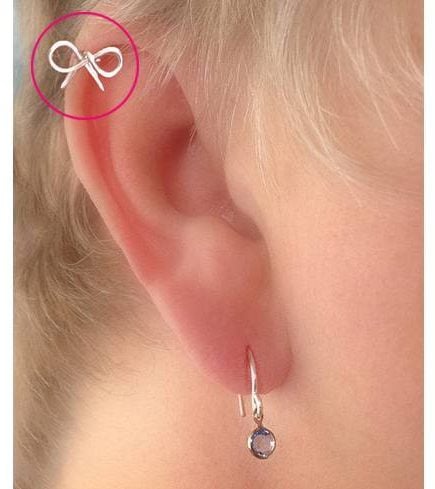
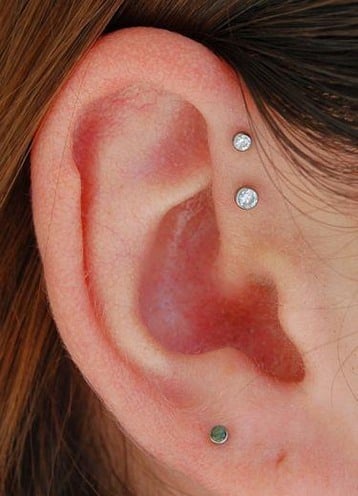
Forward Helix Piercing:
[Also Read: Septum Piercing]
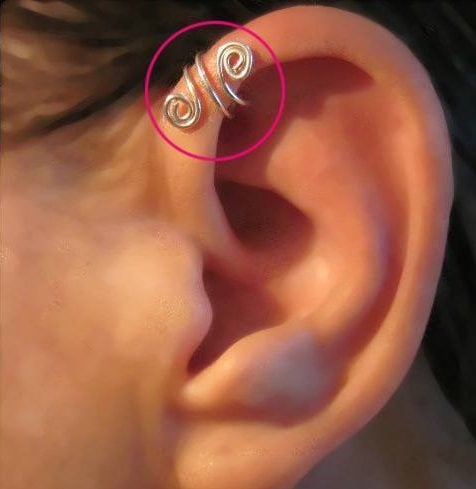
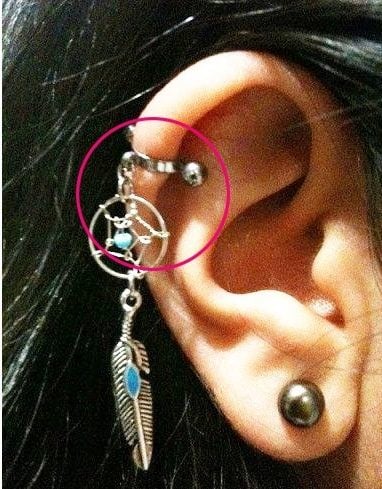
Triple Helix Piercing :
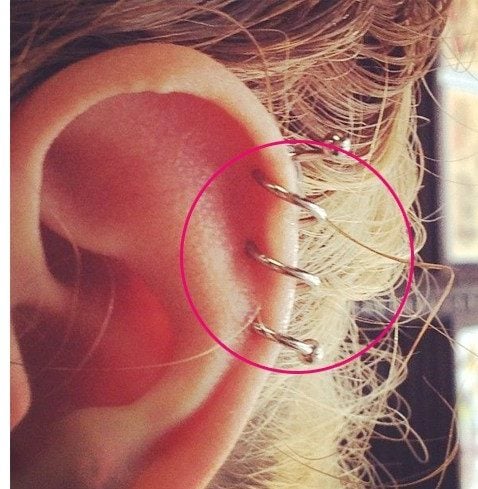
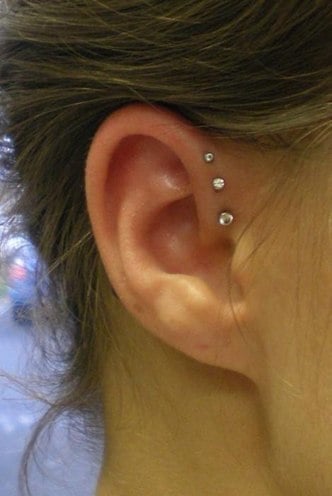
Industrial And Forward Helix Piercing:
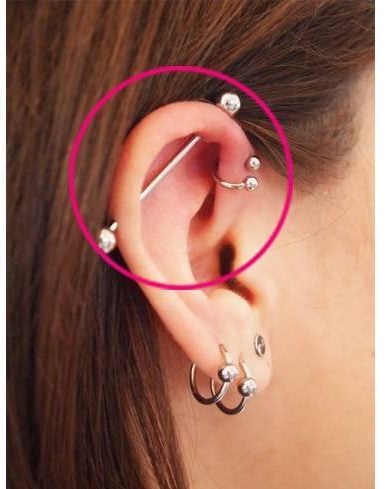
Anti-helix: This area is the raised ridge between the helix and ear canal. It involves rook, which is the upper ridge and snug, the lower ridge of the helix.
Rook / Anti – Helix Piercing:
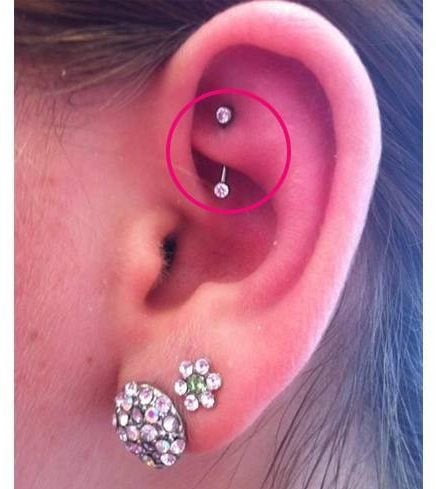
[sc:mediad]
Snug: The lower portion of the anti-helix. In this case, the cartilage is pierced from end to the other instead from front to back.
Snug Piercing:
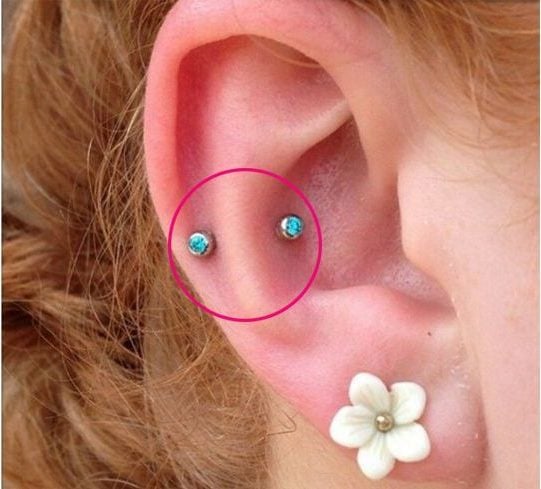
Conch: It involves the inner conch, which is the cup-shaped portion of the ear and the outer conch, which the flat area between the rim.
[Also Read: Clip On Belly Button Rings]
Conch Piercing:
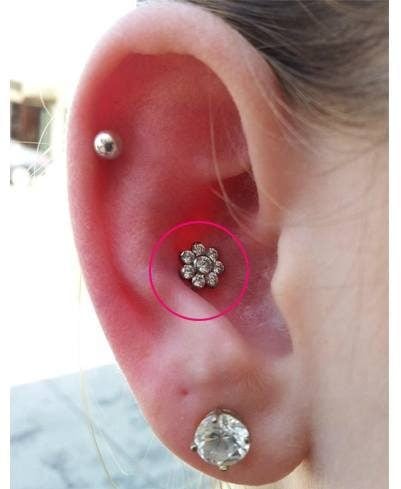
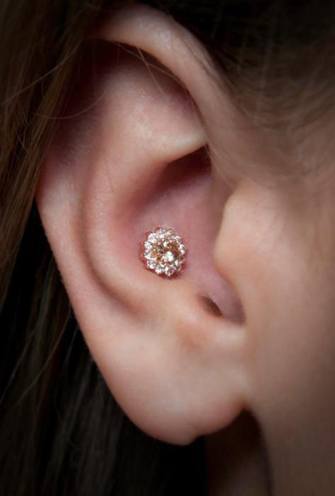
Daith: It is the small portion of cartilage present just above the ear canal.
Daith Piercing:
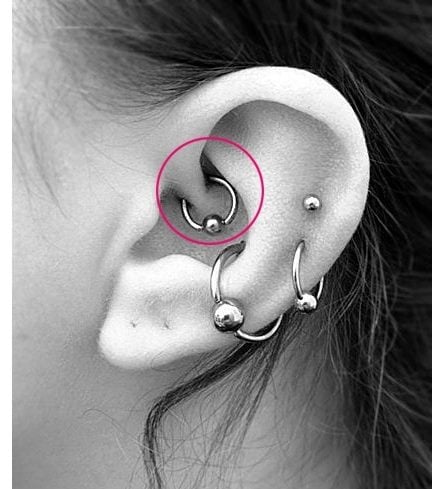
Tragus: It is the small thick flap of cartilage located over the ear canal.
Tragus Piercing:
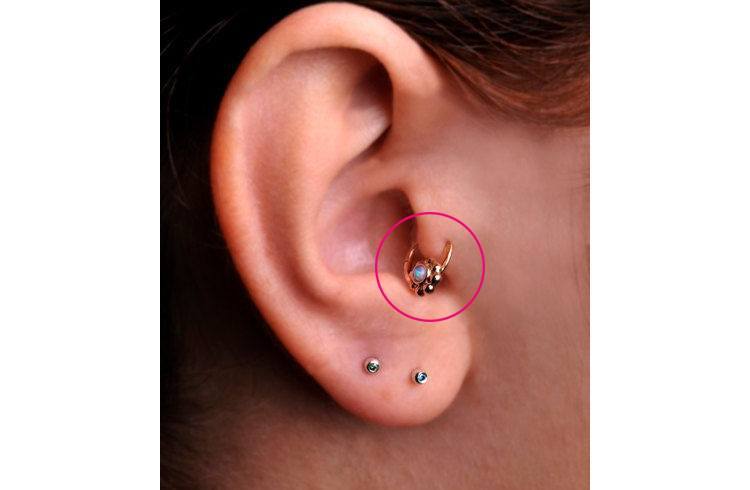
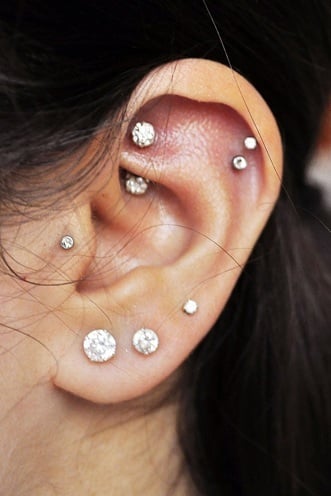
Anti-tragus: It is a small flap of cartilage located above the earlobe around the tragus.
Anti Tragus Piercing:
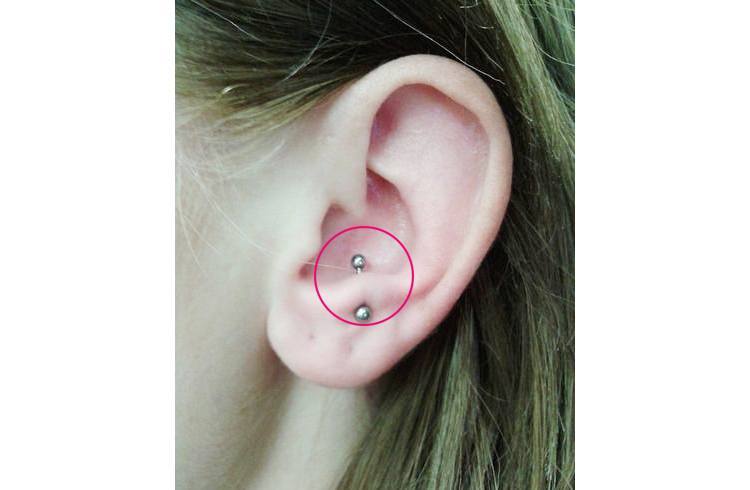
Different Types of Nose Cartilage Piercing

Nostril Piercing: The piercing passes through the nostril on either side and end up in the inside of the nose. It also involves high nostril, where piercing is done towards the top of the nose, much closer to the bone different from a standard nostril piercing.
[Also Read: Cuffs for Pierced Ears]
Nostril Piercing:
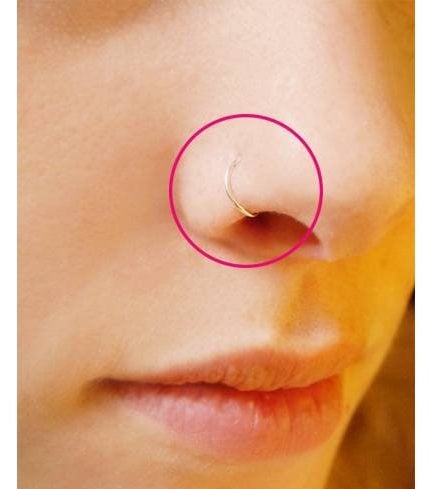

Nose tip: The piercing is done within the nostril and ends up at the tip of the nose.
Nasallang: It is a set of three piercings connected by one piece of jewelry, usually a barbell. In this type, both the nostrils are pierced along-with the septum.
Nasallang Piercing:
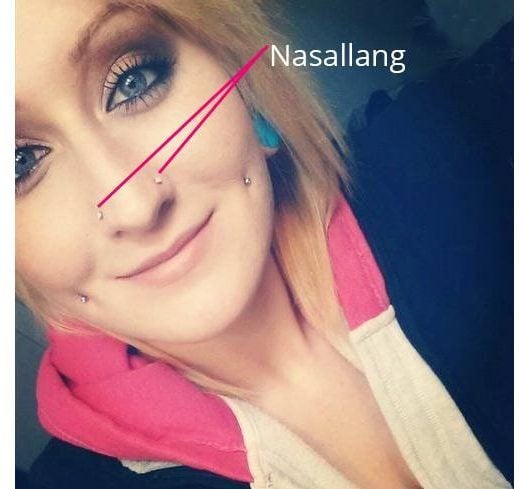
Septum: It is the piece of tissue in the middle of the nose separating the two nostrils. People often confuse it with cartilage piercing. The septum piercing passes through the small bit of tissue just under the cartilage and above the skin.
Septum Piercing:
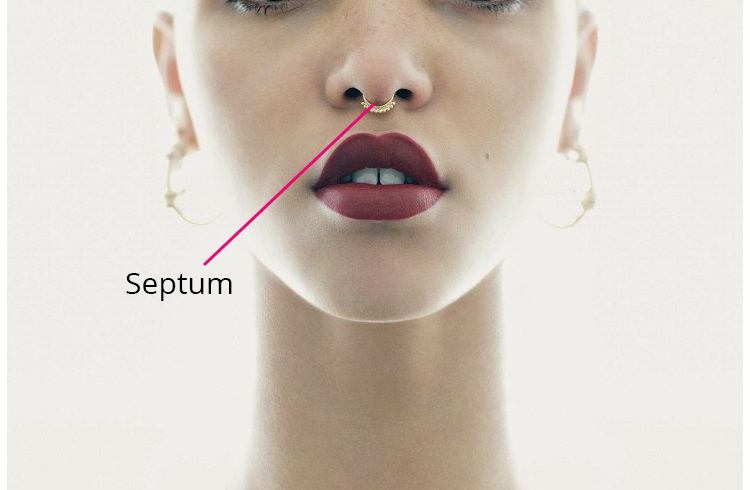
So with so many options on your ears, you can also get as many piercings as you would like. It isn’t new or to find someone with multiple cartilage piercings on the same ear. The cartilage piercing always endures style and placement.
Such kind of body piercings are always lovely and unique, without being too extreme. You have the freedom to choose when to flaunt and when to hide your piercings. If you want them to be hidden in your school or work-place, you can just leave your hair down or remove them. And later on wear them and tuck your hair to flaunt your new embellishments.
Thinking of Getting a Cartilage Piercing
Let’s start our second part with this –
When you’ve gone for cartilage ear piercing, always remember to be extra careful with your hair brushes and glass, as your jewelry can easily get snagged on glasses, combs, hair brushes etc. So always be mindful while dealing with those stuff. The Cartilage Piercing bears the longest healing period in the world of body piercing.
The healing process is slow as the cartilage tissues tends to heal from the outside, thereby leaving the inner layers still sore and raw. To clear, it will take around 3-6 months to completely get healed and even in some cases, it takes 6-12 months for healing.
You’ll have to clean your piercing twice daily with any anti-bacterial soap or the cleaning solution given by your professional. You can integrate this cleaning process with your morning and evening ritual.
FAQ
Is getting a cartilage piercing painful?

Let us tell you every individuals’ pain-tolerant capacity is different. Although it involves some level of discomfort, as getting a foreign object pierced into the delicate part of your body is never a pleasant experience, but the pain is somehow tolerable.
Let’s put it into the pain scale on 5 or 6. The initial sensation will make you feel like an insect bite. It’s normal for your ears to hurt after getting a cartilage piercing and also prepare for the pain for two more weeks or even a month.
Make sure you do not sleep on the side you’ve got the piercing. You can go for pain killers such as Tylenol or Asprin, which will temporarily reduce the pain of the tenderness of your new piercing.
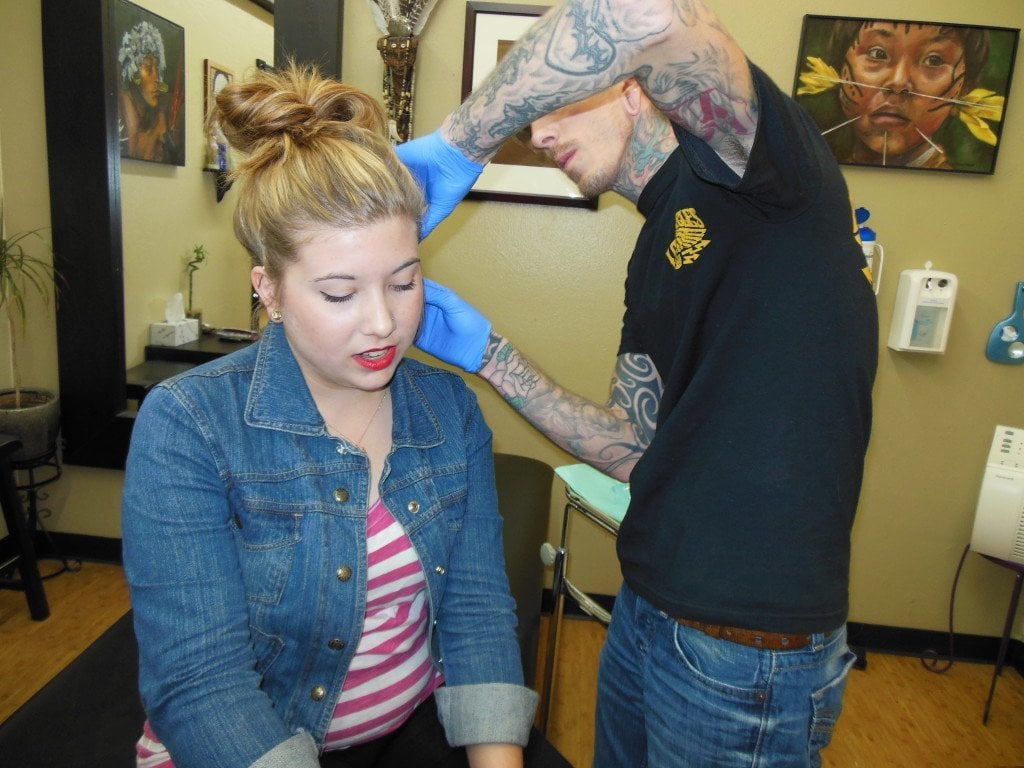
Where should I have my cartilage piercing done?
Soon after you’ve decided the exact place to get the piercing, finding a place becomes the matter of concern. You should always be careful in choosing the place. While most of the parlors offer such services, even tattoo parlors also offer body piercing. Before picking up any store, always remember to verify the store. It’s always good to check-out reviews online and if possible even check for their authentication/license.
Gun shot piercing or needle piercing?
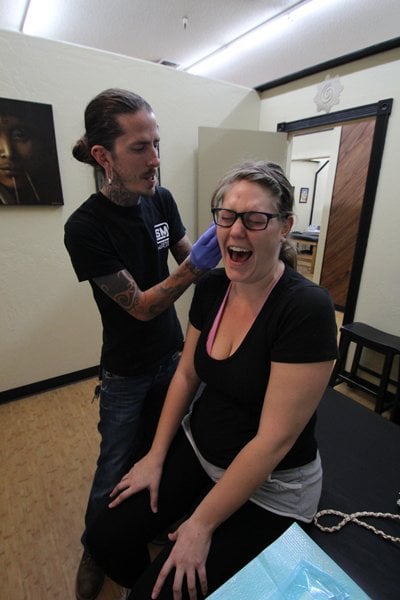
This is perhaps still one of the debated topics.
For years, it’s been a common belief that gun piercing promotes infection, disfigurement of the ear and even shattering of the cartilage. Recent medical studies have however showed that both needle as well as gun piercing lead to infection and other complications.
While in some cases, gun piercing was absolutely safe, others who went for this kind of piercing got infected and came up with various complications. So, it’s always better to go for your gut instinct and prefer your personal comfortable zone. Go to a place where you feel you’ll get a safe, sterile and hygienic cartilage piercing.
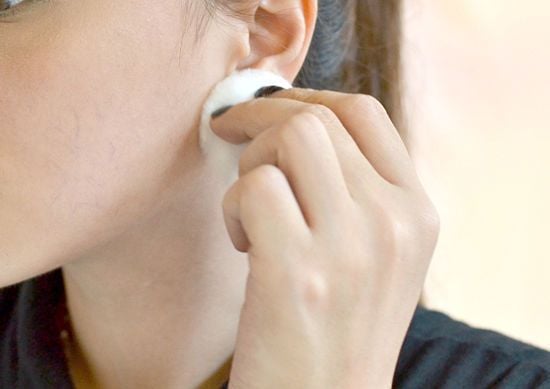
But do your homework well before choosing a parlor. Don’t be shy away from asking questions. Ask your selected parlor about their sterilization procedures and credentials of the staff.
If they won’t up about their procedures and the quality of their staff, it’s always better to take your business else where.
Rule of thumb, if you wouldn’t eat a meal there, do not get pierced there.
Hope this helps!
images Source: pinterest
